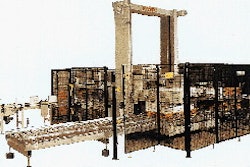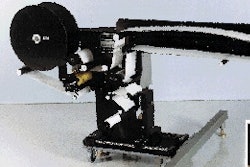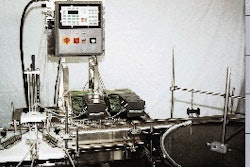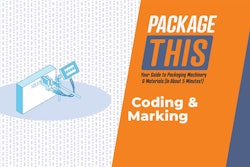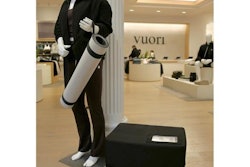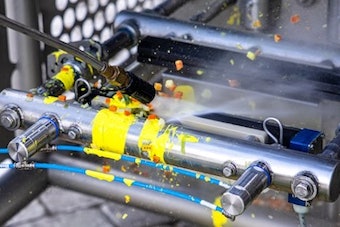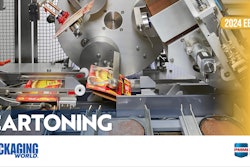Every now and then, they even ask me to convey kudos for packaging changes. If your name appears on the label of this issue, you are a packaging professional and your friends and family are, no doubt, giving you the same kinds of reports. It's clear that American consumers (or at least the ones that live around this neck of the woods) don't like packages that are hard to open, half-filled, difficult to grip, complicated to use or require a tool to close. They do like lightweight containers that open easily, reclose simply and securely, and keep the chips (or whatever) inside from crumbling. For the unsatisfied who surround me, the inconvenience of convenience packaging falls into the category of one of life's little problems. Consumers often don't bother complaining about it because finding someone to complain to is too much of a hassle. Around here, people have lost faith in "consumer hotline" toll-free phone numbers on packaging. They've come to believe that companies choose irrepressibly cheerful operators, powerless to do anything, to staff those lines. Confronted by packaging complaints, my friends and family switch brands or suffer in silence, until they see me. "You're in packaging. Why don't you do something about. . ." For some reason they cling to the belief that I can do something about their packaging problems. I can't do that, but I can pass along some of the unscientifically gathered input I've received. Sewing and closing Pet owners are frustrated by sewn-closed pet food bags that don't clearly tell them which end of the string to pull. "Why don't they color the end of the string you're supposed to pull?" asks a neighbor who recently brought a yellow lab home and wants to know the secret to opening the bags cleanly. "And how are you supposed to reclose the bags once you do get them opened?" I tell my friend that my chocolate lab's food bags are sealed with glue (hot melt, you and I call it) and that I rip off a corner of the bag and dump the dry food into a plastic garbage can I bought for the purpose. We use a big chip-clip to close the cat's food bag. "They ought to give you one in every bag," says the neighbor. Child-resistant closures, of course, are high on the complaint list around here. It's not that folks think they're a bad idea for families with pre-school children. It's just that most of the people who buy "toxic household substances" in CR packages<>the obvious ones like aspirin, furniture polish and prescription drugs, and even some surprising ones, such as mouthwash<>don't have small kids to worry about. They resent the limited "non-child-resistant" packaging choice they find in supermarkets, drug stores and garden centers. "It's a regulatory thing," I tell them. They are not appeased. It will be interesting to see how they react to the "adult-friendly" CR devices that are mandated by law on January 8, 1998. Part of the problem with CR closures is that we grown-ups were weaned on bottles and jars with caps that unscrewed with a simple (if sometimes necessarily forceful) counter-clockwise twist and multiple-cell pill blister packs that disgorged their contents simply by pushing them through the back of the cards. The Poison Prevention Packaging Act forced consumers to consciously address certain product containers. And in this age of speed dials, TV remotes and electric door openers, consumers don't like to be forced to think about how to open containers. Intelligent packaging? One of my favorite food packages is the intelligent tandem vacuum pouch in which Oscar Mayer Free hot dogs are packaged. The package is easier to open than most in the category and it seals up tightly, keeping the mess in the refrigerator meat drawer to a minimum. Still, at this end of the distribution cycle, the pouch always seems to raise hackles among the professionals and consumers who regularly deal with it. Picture the package: Four hot dogs are aligned inside a heat-sealed, vacuum-packed pouch fitted with a red plastic zipper. Two of these pouches are held together with a dollop of hot melt and the pouch tandem is encircled by a paper belly band that carries brand and product information and a Universal Product Code symbol. Unfortunately, the UPC symbol printed on one end of the belly band is partially covered, and therefore unscannable, by the other end of the band that overlaps it. Invariably the supermarket cashier swipes the package over the scanner several times before turning it over, lifting the band flap to fully expose the code and scanning it. "Why don't they put the flap with the UPC on top?" I'm asked. Why not, indeed. Friends who prefer the Oscar Mayer Free hot dog package and product over their other fat-free hot dog choices want me to "take care of" some of the problems they're having with the package. Keeping in mind that I consider the Oscar Mayer Free hot dog package "best in breed," I pass along suggestions from the field for making the package even better in the eyes of some faithful consumers. * Use a different adhesive to join the two pouches. Or use less of it. The current adhesive spec/dose is far too tenacious. Small children, mild-mannered men, even super moms are having trouble pulling the pouches apart so they can open one and store the other. * Give consumers something better to grip when pulling open the zippered pouch lips. An extra half-inch of pouch material or a friction texturing of the lips might help. Another nickel added to the retail price to cover these improvements wouldn't be begrudged. * Upsize the zipper to make reclosing easier. Some of my friends are having trouble mating the channels on the thin zipper now being used. If it's been some time since you sampled consumer opinion about your packaging, you may be guilty of creating containers to maximize production efficiencies. This is not entirely a bad thing. But take a lesson from the fresh tomato marketers who took pride in developing hard, green produce that could be mechanically picked and packed, only to learn that their achievements resulted in hard, green, tasteless tomatoes consumers didn't want. Ask yourself this: When was the last time you read or listened to consumer packaging complaints/suggestions and did anything about them? If consumer input has prompted you to improve your packaging recently and you're not telling anyone about it, start communicating right now. When consumers see you've improved your packaging as they suggested, word will spread. Satisfying consumers' packaging needs should be the baseline of your packaging operations. But if you want to move above the baseline, make changes that exceed consumers' expectations. You'll find this is the most powerful marketing decision your packaging operation can make.


